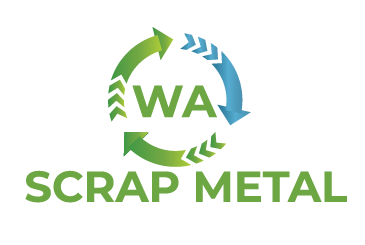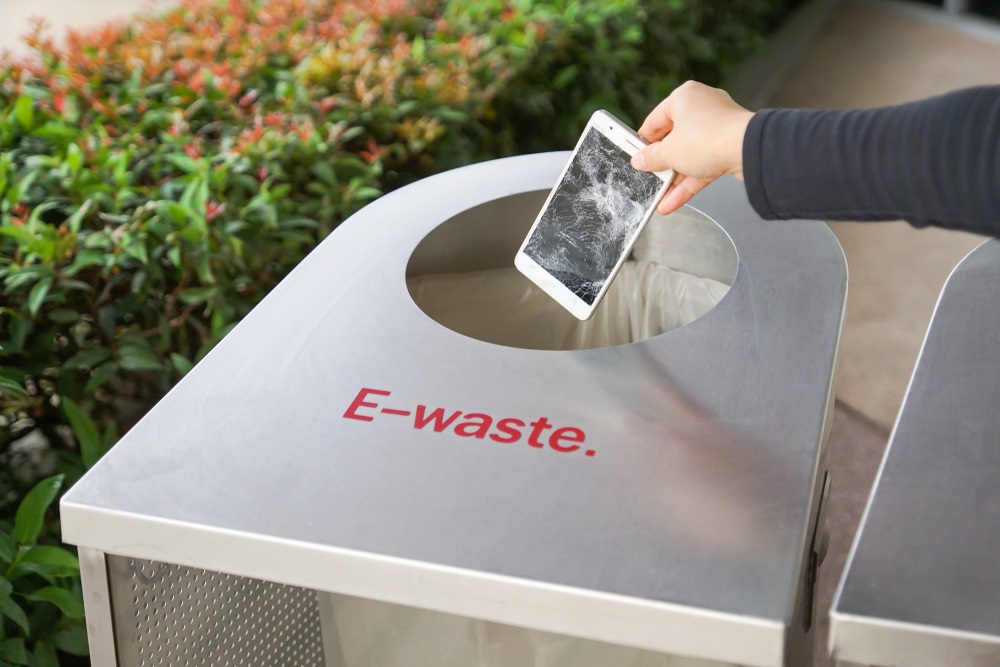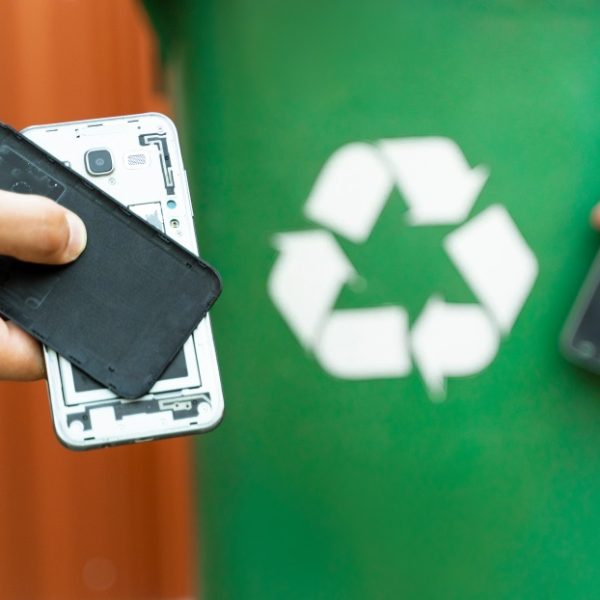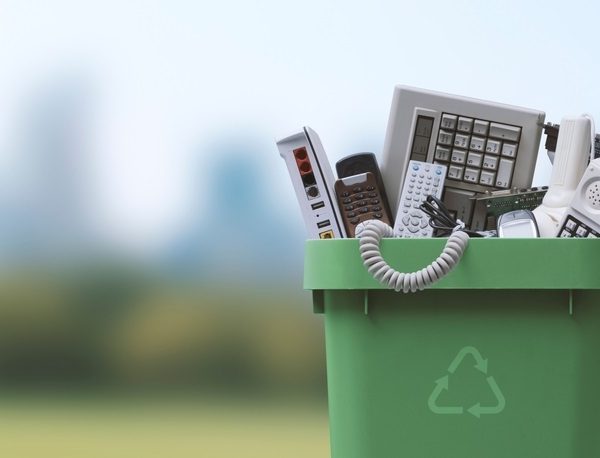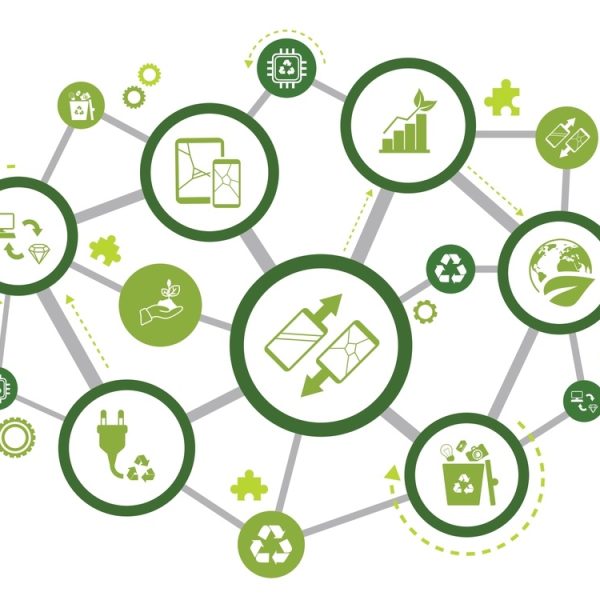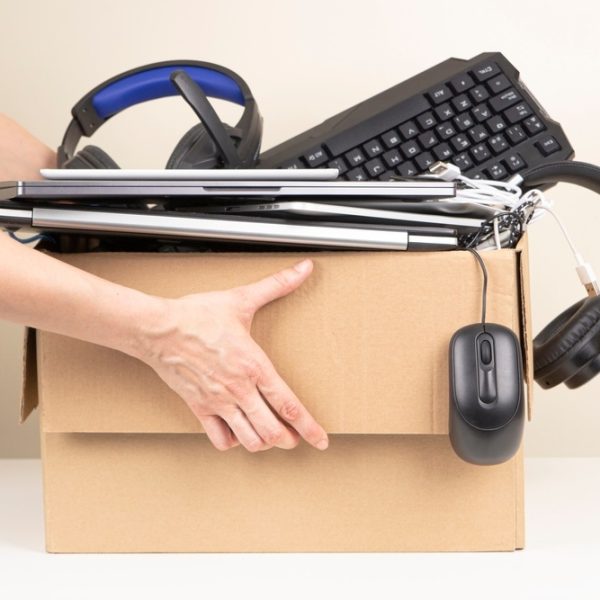Easy Ways to Recycle e-waste | Complete Guide
In today’s digital age, electronic devices have become an integral part of our lives. From smartphones to laptops, we rely heavily on these gadgets for communication, entertainment, and work. However, with the constant upgrading of technology and the ever-increasing demand for new devices, electronic waste, or e-waste, has become a significant environmental concern.
E-waste is now recognized as the world’s fastest-growing waste stream. Shockingly, Australians are among the highest users and disposers of e-waste, contributing to the urgency of finding effective recycling solutions.
What Is e-Waste?
E-waste refers to discarded electronic devices, whether in working or non-working conditions. These items contain harmful substances such as lead, mercury, cadmium, and various other toxic materials that can leach into the environment if not properly disposed of.
In Australia alone, over 710,000 tonnes of e-waste are generated each year, and only a small portion of it is recycled. This alarming statistic highlights the need for accessible and efficient e-waste recycling methods.
What are the Common e-Waste Items?
1. Lighting equipment
Light bulbs, fluorescent tubes, and compact fluorescent lamps (CFLs) are common examples of e-waste in the lighting equipment category. These items contain mercury, which can be hazardous if released into the environment. Recycling programs specifically designed for lighting equipment are essential to prevent mercury contamination and promote resource conservation.
- Incandescent light bulbs
- Compact fluorescent lamps (CFLs)
- Fluorescent tubes
- LED light bulbs
- Halogen lamps
- High-intensity discharge (HID) lamps
- Neon signs and tubes
- Fibre optic lighting systems
2. Home appliances
From refrigerators to washing machines, home appliances contribute significantly to the e-waste stream. These appliances contain various components, including circuit boards, wiring, SV hair straightener and refrigerants, which need to be properly managed at the end of their lifespan. Recycling programs for home appliances help recover valuable materials and reduce the environmental impact of their disposal.
- Refrigerators
- Washing machines
- Dryers
- Dishwashers
- Ovens and stoves
- Microwaves
- Air conditioners
- Water heaters
- Vacuum cleaners
- Blenders and food processors
- Coffee makers
- Toasters
- Irons
- Hairdryers
- SV hair straightener
- Electric fans
3. IT, telecommunications, and TV equipment
This category covers a wide range of electronic devices, including computers, laptops, office works mobile phones, televisions, and networking equipment. The rapid advancement of technology leads to a constant cycle of upgrading, resulting in a vast amount of discarded devices. Recycling e-waste from the IT and telecommunications sector not only reduces landfill waste but also helps recover precious metals, plastics, and other materials for reuse.
- Computers (desktops, laptops, servers)
- Monitors
- old printer
- Keyboards, mice, and other computer peripherals
- Printers, scanners, and photocopiers
- Tablets
- Mobile phones
- Landline phones
- Routers, switches, and modems
- Televisions (CRT, LCD, LED, OLED)
- Digital cameras and camcorders
- MP3 players and iPods
- DVD players and recorders
- Office works mobile phones
4. Electrical and electronic tools
Power tools, drills, and other electrical equipment also contribute to the e-waste problem. These items often contain batteries, motors, and circuit boards that require special handling for safe disposal or recycling. Proper management of electrical and electronic tools ensures the recovery of valuable materials while preventing harmful substances from polluting the environment.
- Power drills
- Power saws
- Sanders and grinders
- Electric screwdrivers
- Power nail guns
- Electric lawn mowers
- Hedge trimmers
- Leaf blowers
- Electric soldering irons
- Electric testers and meters
- Electric paint sprayers
- Electric generators
- Power backup systems (UPS)
5. White goods
White goods refer to large household appliances, including refrigerators, freezers, air conditioners, old fridge pick up and dishwashers. These appliances typically contain refrigerants, which can deplete the ozone layer if released into the atmosphere. Recycling white goods allows for the proper recovery and disposal of refrigerants, as well as the reclamation of valuable metals and plastics.
- Refrigerators
- Freezers
- Air conditioners
- Washing machines
- Dryers
- Dishwashers
- Stoves and ovens
- Microwave ovens
- Water coolers
- Water dispensers
- Trash compactors
- Range hoods
- Ice makers
- Wine coolers
6. Toys, leisure, and sports equipment
E-waste encompasses a wide range of items, including toys, leisure, and sports equipment. Battery-operated toys, remote-controlled cars, gaming consoles, and even electronic dartboards fall into this category. These items often contain batteries and electronic components that should not be disposed of in regular waste bins due to their potential environmental impact.
- Battery-operated toys
- Remote-controlled cars
- Gaming consoles
- Electronic dartboards
- Electric scooters
- Electronic learning devices
- Digital cameras for kids
- Electronic musical instruments
- Electronic sports equipment (e.g., electronic dartboards, electronic scoreboards)
What are the Valuable Materials In e-Waste Items?
E-waste contains various valuable materials that can be recycled and recovered. These materials include:
- Precious Metals: Gold, silver, and palladium can be found in circuit boards, connectors, and other electronic components.
- Copper: Wires, cables, and motors in electronic devices contain significant amounts of copper.
- Aluminium: Many electronic devices, particularly computer casings, contain aluminium that can be recycled.
- Plastic: E-waste often contains plastic components, which can be recycled and repurposed.
- Glass: CRT monitors and televisions have glass components that can be recycled into new products.
Why e-Waste Can’t Go In The Bin?
Recycling e-waste is crucial due to various reasons:
- Toxic Materials: Electronic devices contain hazardous substances like lead, mercury, and cadmium, which can harm the environment if disposed of improperly.
- Landfill Pollution: Discarding e-waste in landfills leads to the release of toxic chemicals into soil and water sources, polluting the ecosystem.
- Resource Depletion: Valuable metals and rare elements present in e-waste can be recovered through recycling, reducing the need for mining, and preserving natural resources.
Where To Take Common E-Waste Items?
1. Local Recycling Centres
Most cities have designated recycling centres where you can drop off your e-waste items. To comply with environmental regulations, it is essential to dispose of old car battery and e-waste properly at designated collection centres.
2. Manufacturer Take-Back Programs
Many electronics manufacturers offer take-back programs, allowing you to return old devices for proper recycling. There are parent companies that offer e-waste take-back programs for repurposing them in the manufacturing process. You can easily find them with an optimised online search, like by browsing “telephone shop near me”, ‘fridge recycling near me’, or “how to find an empty radio station” depending on your e-waste disposal needs.
3. Retailer Programs
Some electronics retailers have e-waste recycling programs in place, accepting old devices from customers. People can also dispose of their electronic devices conveniently and responsibly at an e-waste donation box Kmart.
4. Community Collection Events
Check for community events focused on e-waste recycling, where you can bring your items for proper disposal. White residential pages can be used as a valuable resource for recycling, providing a convenient directory of local residential contacts for recycling initiatives.
Types of e-Waste Recycling Services
Innovative e-Waste recycling services cater to various aspects of electronic waste management, addressing the disposal and recycling needs of photocopiers, white goods, data destruction, and computers.
Embracing sustainable practices and leveraging advanced technologies, leads to revolutionizing the e-Waste recycling industry and driving the transition towards a greener and more environmentally conscious future.
1. Photocopier Disposal & Recycling
Did you know that approximately 40 million photocopiers and old printer are discarded worldwide each year?
To tackle this environmental challenge, cutting-edge e-Waste recycling services offer a dedicated solution for the proper disposal and recycling of photocopiers and old printer.
The innovative process ensures that every component of these machines is recycled or reused in an environmentally conscious manner, significantly reducing the carbon footprint associated with their disposal.
Photocopier Disposal and Recycling Statistics
| Year | Number of Discarded Photocopiers |
| 2020 | 35 million |
| 2021 | 38 million |
| 2022 | 42 million |
| 2023 | 40 million (projected) |
2. White Goods Disposal & Recycling
Large household appliances, commonly known as white goods, contribute to a significant portion of global e-waste. With the increasing demand for refrigerators, washing machines, and air conditioners, it is crucial to address the safe disposal and recycling of these items.
Specialized e-Waste recycling services provide a sustainable solution for handling white goods like old fridge pick up, ensuring that harmful components are safely removed, and valuable materials are extracted for reuse, contributing to a circular economy.
White Goods Disposal and Recycling Statistics
| Year | Number of Discarded White Goods |
| 2020 | 70 million |
| 2021 | 75 million |
| 2022 | 80 million |
| 2023 | 85 million (projected) |
3. Data Destruction Services
In today’s digital era, protecting sensitive information is of utmost importance. High-tech and ultra-modern data destruction services offer a secure solution for erasing personal and confidential data from electronic devices before they undergo recycling or disposal.
Rigorous processes that meet the highest industry standards ensure that your data remains permanently and irretrievably erased, minimizing the risk of identity theft and data breaches.
Data Destruction Services Impact
| Year | Number of Devices Processed | Amount of Data Destroyed (TB) |
| 2020 | 5 million | 120 |
| 2021 | 6 million | 150 |
| 2022 | 7 million | 180 |
| 2023 | 8 million (projected) | 200 |
4. Computer Disposal & Recycling
Computers contain valuable resources, such as precious metals and rare earth elements, making their recycling crucial for both environmental preservation and resource conservation.
Specialized recycling services focus on the reuse and environmentally friendly disposal of computers, ensuring the extraction of valuable materials while minimizing harm to the environment. Diverting these devices from landfills contribute to a greener future and a sustainable circular economy.
Computer Disposal and Recycling Impact
| Year | Number of Discarded Computers |
| 2020 | 150 million |
| 2021 | 160 million |
| 2022 | 170 million |
| 2023 | 180 million (projected) |
E-waste Pick-up Services
Choose innovative pick-up services and be part of the positive change Australia deserves. Partnerships with accredited recycling facilities, ensure that valuable resources are recovered.
Innovative e-Waste recycling services cater to various aspects of electronic waste management, addressing the disposal and recycling needs of photocopiers, white goods, data destruction, and computers.
A. Residential Collection & Pick-Up
Experience the epitome of convenience with cutting-edge curb-side pick-up services dedicated to handling e-waste. As responsible residents, you can effortlessly schedule pick-ups like old fridge pick up for your discarded electronics e.g., SV hair straightener, ensuring their proper disposal while safeguarding the environment.
The highly trained technicians from local recycling centres, e.g., ‘fridge recycling near me’ services, are armed with state-of-the-art equipment. They will collect your electronic items with the utmost professionalism, ensuring a seamless and eco-friendly process.
Similarly, if you are looking to sell your vehicle? Find convenient options for ‘money for cars near me’ and get the best deal for your vehicle without the hassle.
B. Office Collection & Pick-Up
Unlock the power of sustainability in your workplace with state-of-the-art e-waste pick-up services tailored exclusively for businesses.
By entrusting the trained personnel with responsible disposal of your electronic devices, you’re not only minimizing your environmental footprint but also setting a commendable example for others to follow.
A dedicated team of experts will seamlessly integrate into your office environment, collecting and managing e-waste in a manner that aligns with your business requirements and sustainability goals.
Recycle Your E-Waste Responsibly
As the volume of e-waste continues to rise, individuals and businesses must take responsibility for proper disposal and recycling. By recycling e-waste, valuable resources can be recovered, reducing the environmental impact of electronic waste, and conserving raw materials.
Remember, the next time you need to dispose of electronic devices, choose the appropriate recycling services or drop-off locations to ensure proper disposal.
Take a step towards a greener future by recycling your e-waste today.
Visit your local e-waste drop-off point or schedule a pick-up service for hassle-free disposal.
FAQs
Why is it called e-waste?
The acronym “e-waste” stands for “electronic and electrical waste”. The word “waste” technically means that the thing has no further use and is rejected as unnecessary or surplus to the owner in its existing form.
What is another name for e-waste?
In various parts of the world and different settings, electronic trash is also known as WEEE (Waste Electrical and Electronic Equipment), electronic waste, or e-scrap.
What is the biggest source of e-waste?
Household appliances. Appliances including refrigerators, washing machines, air conditioners, dishwashers, and vacuum cleaners can all unintentionally wind up in the landfill.
Which countries produce the most e-waste?
- Norway
- United Kingdom
- Switzerland
- Denmark
- Australia
What are the three steps of the e-waste recycling chain?
It is categorised into three stages:
- Collection,
- Pre-treatment & treatment
- Disposal
What is e-waste and its management?
E-waste management is the process of gathering e-waste, recovering, and recycling material safely, and disposing of e-waste properly to lessen any negative effects on the environment.
What is the principle of e-waste?
The EPR principle is an environmental policy approach. The “extended producer responsibility (EPR)” makes manufacturers responsible for their products even after they are used. EPR policies encourage product designs that promote recycling and reuse.
